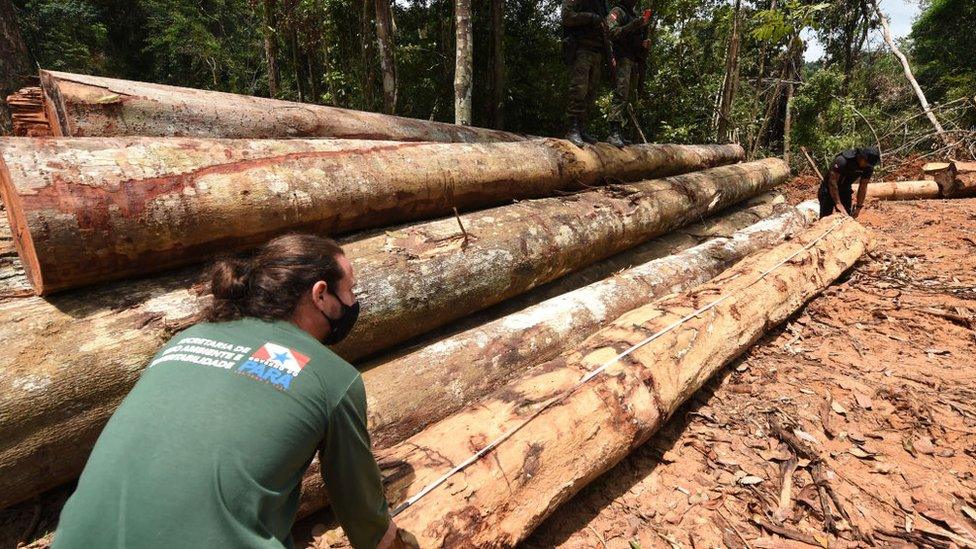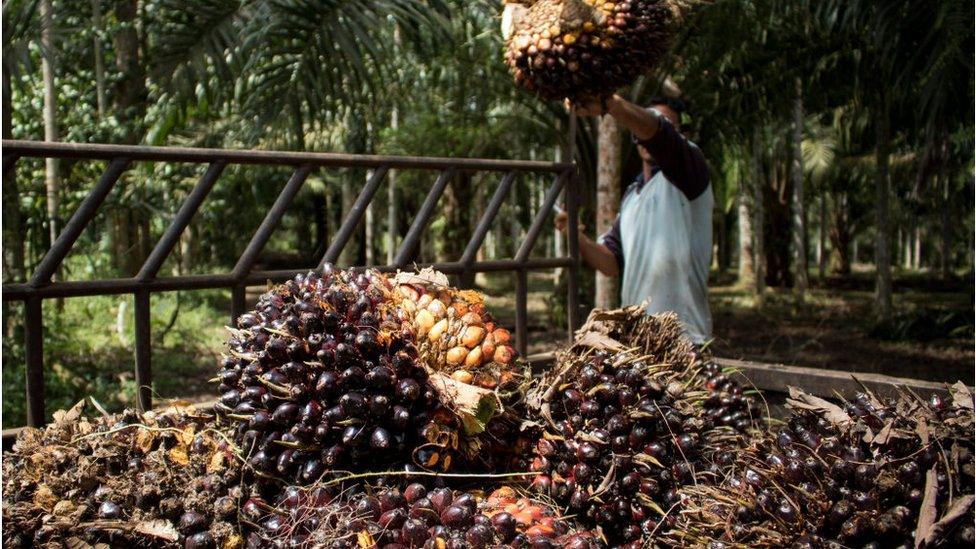Climate change: Record tree losses in 2021 in northern regions
- Published

Tree cover losses in northern regions of the world were the highest on record in 2021, according to new analysis from Global Forest Watch.
Figures for these boreal forests were up 30% on 2020, with wildfires causing massive losses in Russia.
Elsewhere, around ten football pitches per minute of tropical primary forest were lost across the year.
Brazil, once again, led the way with a significant uptick in tree loss associated with agricultural expansion.
This new data, external records the losses of tree cover in 2021, and is not the overall net picture when new plantings are taken into account.
Much of the focus for researchers is on the world's tropical regions because this is where more than 96% of deforestation takes place.
When it comes to tropical primary forests, Brazil and the Democratic Republic of Congo top the table as they have for many years now.

Fires in Russia were the most destructive in records dating back to 2001
But one of the big concerns in the new figures is the loss of boreal forests which are found in northern parts of Russia, Canada and Alaska.
While the cutting or burning of trees in these regions rarely results in permanent deforestation, the number of trees destroyed in 2021 was up 30% on 2020, to the highest level yet recorded,
Climate change is seen as a key driver of tree loss in these areas, with hotter drier conditions leading to more wildfires and greater damage from insects.
Russia saw its worst fire season since records began in 2001, losing more than 6.5 million hectares.
"It's hugely worrying," said Rod Taylor from the World Resources Institute, part of the team behind the new analysis.
"Global warming is generally happening faster as you get closer to the poles, so it's like having a changing climate and an ecosystem that's not coping, so we're seeing fires that burn more frequently more intensively and more broadly than they ever would under normal conditions."
Outside of northern regions, tree losses continued at very high levels in tropical areas - in terms of carbon, the destruction of these trees was equal to the annual fossil fuel emissions of India.
Over 40% of this primary forest loss occurred in Brazil, with the non-fire related destruction increasing by 9% overall - researchers say that is normally associated with the expansion of agriculture. In some key states in the western Amazon region, these losses were as high as 25%.

Officials examine the site of illegal tree cutting in Brazil
This is a key concern for climate researchers who fear that the Brazilian rainforest may be approaching a tipping point when it emits more carbon than it stores, which would be a very negative development in limiting the rise in global temperatures this century.
There are also growing worries about trees losses in Bolivia where over two thirds of the clearance of trees was linked to large scale agriculture such as cattle ranching.
However, there is some good news in the data, with Indonesia curbing tree losses for the fifth year in a row.
There are several factors behind this success.
The government has put in place a permanent moratorium on converting primary forest and peat land for palm oil. They've also included a commitment in their national climate plan to reduce emissions from forests so they become a carbon sink and not a source by 2030.
They've also been helped by industry actions, with deforestation for palm oil at a 20 year low, while commitments to stop clearing new lands have also been tightened for the pulp and paper industry.
But there are some concerns that things in Indonesia could change for the worse in coming years.
"The palm oil price is currently at a 40-year high and this might increase the appetite to expand palm oil plantation areas," said Hidayah Hamza, from WRI Indonesia.

Palm oil harvesting in Indonesia where government efforts have seen a remarkable slowdown in tree losses
"And a temporary freeze on new oil palm plantations was not renewed last year."
While the data from Indonesia and Malaysia is positive, the overall picture is not going in the right direction.
At COP26 in Glasgow last Autumn, some 141 countries committed to "halt and reverse forest loss by 2030."
This will require significant and rapid action in many countries that isn't evident at present.
One of the biggest concerns is that despite the best efforts of many governments to preserve the forests, a rapidly changing climate could upend their good work.
"Wildfires are often linked to the hotter, drier conditions that climate change is bringing, which compound the similar local effects of deforestation itself," said Frances Seymour, from WRI.
"And this loss of forest resilience is edging us closer and closer to tipping points, such as the wholesale conversion of the Amazon rainforest to a savanna grassland that would release enough carbon into the atmosphere to blow the Paris Agreement goals right out of the water."
The data, external has been compiled by Global Forest Watch, World Resources Institute and the University of Maryland.
Follow Matt on Twitter @mattmcgrathbbc, external.